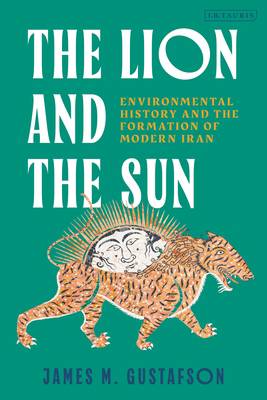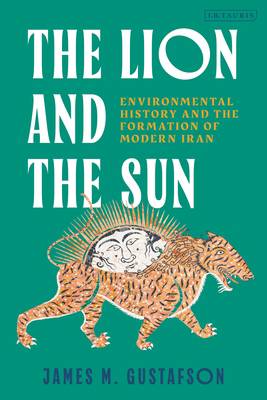
Je cadeautjes zeker op tijd in huis hebben voor de feestdagen? Kom langs in onze winkels en vind het perfecte geschenk!
- Afhalen na 1 uur in een winkel met voorraad
- Gratis thuislevering in België vanaf € 30
- Ruim aanbod met 7 miljoen producten
Je cadeautjes zeker op tijd in huis hebben voor de feestdagen? Kom langs in onze winkels en vind het perfecte geschenk!
- Afhalen na 1 uur in een winkel met voorraad
- Gratis thuislevering in België vanaf € 30
- Ruim aanbod met 7 miljoen producten
Zoeken
The Lion and the Sun
Environmental History and the Formation of Modern Iran.
James M Gustafson
Hardcover | Engels
€ 195,45
+ 390 punten
Omschrijving
Why did the place of formerly powerful Eurasian land empires, like that of Iran, change so dramatically in global affairs over the course of the eighteenth and nineteenth centuries?
This book explores this critical transitional period in Iranian history from an environmental perspective. It argues that severe ecological challenges dating to the late seventeenth century, and deepening during the post-Safavid crisis of the eighteenth century, drove a decline in the population and resource base of the Iranian plateau. This in turn shaped ongoing environmental challenges in the Qajar period and on into the 20th century.
Presenting a new set of perspectives on key sources with new questions in mind, The Lion and the Sun relies upon scientific evidence such as Geographic Information System data and tree-ring analysis, as well as a careful re-engagement with existing sources. Re-interpreting court chronicles, administrative orders, local histories, geographical texts, and endowment deeds, the book reveals the way in which the relationship between imperial systems and the rest of nature formed the modern state of Iran. An important and original contribution, it will be essential reading for scholars and students of global environmental history and the modern Middle East.
This book explores this critical transitional period in Iranian history from an environmental perspective. It argues that severe ecological challenges dating to the late seventeenth century, and deepening during the post-Safavid crisis of the eighteenth century, drove a decline in the population and resource base of the Iranian plateau. This in turn shaped ongoing environmental challenges in the Qajar period and on into the 20th century.
Presenting a new set of perspectives on key sources with new questions in mind, The Lion and the Sun relies upon scientific evidence such as Geographic Information System data and tree-ring analysis, as well as a careful re-engagement with existing sources. Re-interpreting court chronicles, administrative orders, local histories, geographical texts, and endowment deeds, the book reveals the way in which the relationship between imperial systems and the rest of nature formed the modern state of Iran. An important and original contribution, it will be essential reading for scholars and students of global environmental history and the modern Middle East.
Specificaties
Betrokkenen
- Auteur(s):
- Uitgeverij:
Inhoud
- Aantal bladzijden:
- 272
- Taal:
- Engels
Eigenschappen
- Productcode (EAN):
- 9780755634842
- Verschijningsdatum:
- 20/02/2025
- Uitvoering:
- Hardcover
- Formaat:
- Genaaid
- Afmetingen:
- 156 mm x 234 mm
- Gewicht:
- 553 g

Alleen bij Standaard Boekhandel
+ 390 punten op je klantenkaart van Standaard Boekhandel
Beoordelingen
We publiceren alleen reviews die voldoen aan de voorwaarden voor reviews. Bekijk onze voorwaarden voor reviews.









